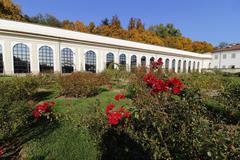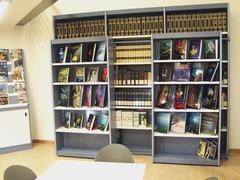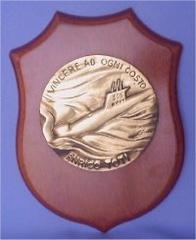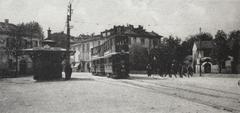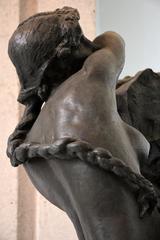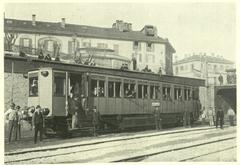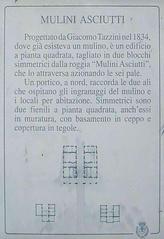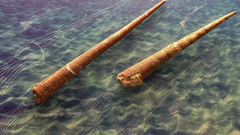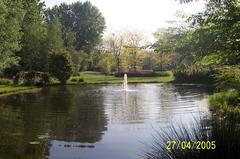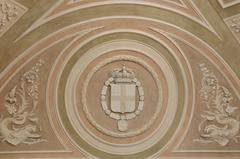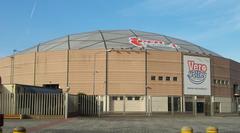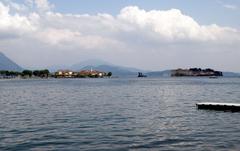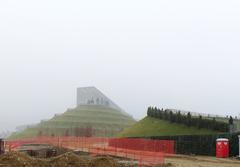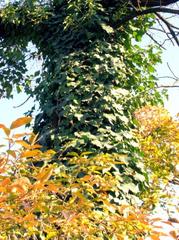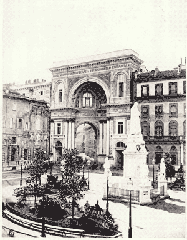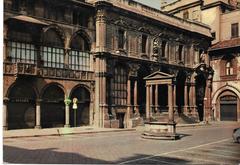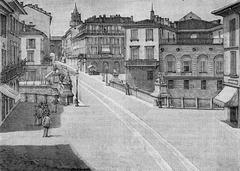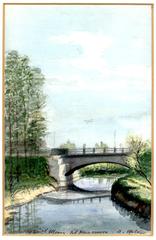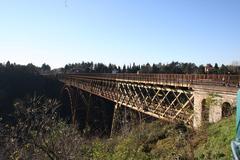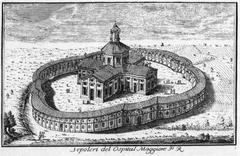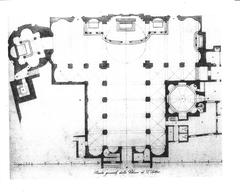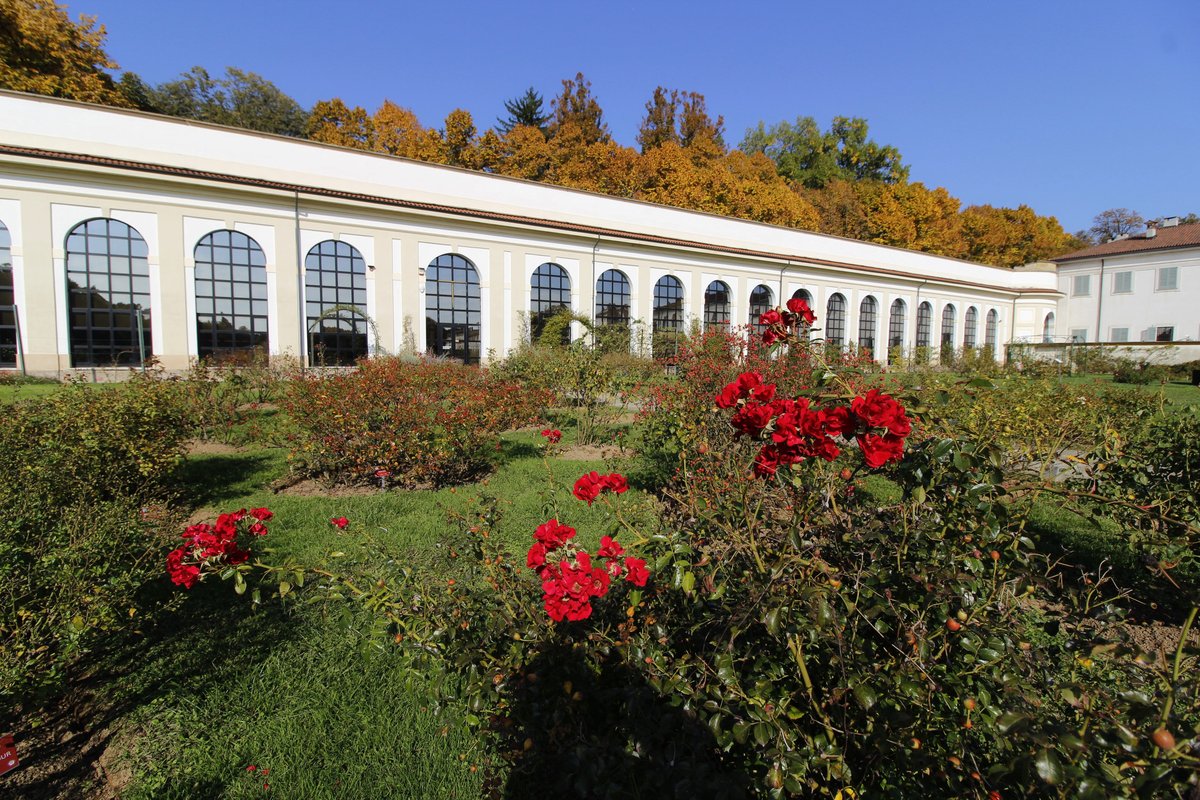
Villa Reale Serrone Monza: Visiting Hours, Tickets, and Historical Significance
Date: 14/06/2025
Introduction
Nestled in the heart of Monza, Italy, the Villa Reale and its renowned Serrone (Orangery) stand as enduring symbols of neoclassical elegance, royal heritage, and vibrant cultural life. Commissioned in the late 18th century by Empress Maria Theresa of Austria for her son Archduke Ferdinand and brought to life by the esteemed architect Giuseppe Piermarini, the Villa Reale was envisioned as a summer royal residence. Over the centuries, both the villa and Serrone have evolved from a private aristocratic retreat to a public center for art, horticulture, and cultural events.
Today, visitors can explore lavishly restored palace interiors, expansive English-style gardens, the celebrated Rose Garden, and the Serrone’s luminous exhibition space. This guide provides up-to-date information on visiting hours, tickets, accessibility, travel tips, and the historical and cultural significance that make the Villa Reale di Monza a top destination among Monza historical sites.
For detailed planning and the latest updates, visit the official Villa Reale Monza website and Monza tourism resources.
Table of Contents
- Introduction
- Historical Background
- Architectural and Artistic Features
- Cultural Significance
- Visitor Information
- Serrone as a Cultural Venue
- Frequently Asked Questions (FAQ)
- Visuals and Media
- Plan Your Visit
- Conclusion
- References and Sources
Historical Background
Origins and Construction
The Villa Reale di Monza was commissioned in 1777 by Empress Maria Theresa of Austria for her son, Archduke Ferdinand, then governor of Milan. Designed by Giuseppe Piermarini, the palace’s neoclassical style reflects Enlightenment values of symmetry, harmony, and understated grandeur. Construction concluded in 1780, with the Serrone—originally an orangery built to protect citrus trees—added in 1790.
Napoleonic and Austrian Eras
During the Napoleonic era, the villa became the residence of Eugène de Beauharnais, Viceroy of the Kingdom of Italy. Architect Luigi Canonica expanded the estate and created Monza Park, now one of Europe’s largest enclosed parks. After Napoleon’s fall, the villa returned to Austrian control, with further improvements to its gardens and interiors.
House of Savoy and Italian Kingdom
Following Italy’s unification, the Villa Reale became a royal residence for the House of Savoy. King Victor Emmanuel II bestowed the villa on his son Umberto I, who advanced its modernization and sustained the Serrone’s role as a cultural hub.
20th Century and Restoration
The assassination of Umberto I in 1900 marked the end of the villa’s royal era, leading to a period of neglect, which was exacerbated during World War II. Major restoration efforts began in the late 20th century, reviving the villa and Serrone as public cultural venues overseen by the Consorzio Villa Reale e Parco di Monza (monzanet.it).
Architectural and Artistic Features
Main Palace
The Villa Reale’s U-shaped layout, grand yet balanced façade, and stately courtyard are hallmarks of neoclassical architecture. The 740 rooms include opulent state rooms, banquet halls, and private royal apartments, all adorned with stucco, frescoes, and period furnishings (italia.it).
The Serrone (Orangery)
Constructed in 1790, the Serrone is a 100-meter-long orangery distinguished by large arched windows, pilasters, and a modular, light-filled design. Originally used for overwintering citrus trees, it now serves as a bright, flexible space for art exhibitions and events (in-lombardia.it).
Interior Decor and Gardens
The villa’s interiors feature grand halls such as the Sala degli Uccelli and the Ballroom, decorated with stucco, frescoes, and fine furnishings. The English-style gardens, extending over 40 hectares and forming part of the vast Monza Park, include winding paths, a pond, the Antro di Polifemo grotto, and a classical temple. The Rose Garden, established in 1964, showcases over 400 rose varieties (italiadelight.it).
Cultural Significance
Historical Context
The Villa Reale was a symbol of Habsburg prestige and enlightened governance in Lombardy before passing to the House of Savoy. It reflects centuries of political change, artistic achievement, and adaptation to contemporary cultural life (monzanet.it).
Serrone as a Cultural Venue
The Serrone’s transformation from greenhouse to exhibition space highlights the dynamic interplay between historical legacy and modern culture. It regularly hosts major art exhibitions, concerts, and public events, including shows featuring artists like Renoir, Picasso, Miró, and Fontana (comune.monza.it).
Artistic Heritage and Community Engagement
The villa and Serrone are vibrant centers for art, education, and community activity. Exhibitions, workshops, and guided tours foster a deeper appreciation of art and history for visitors of all ages (reggiadimonza.it).
Visitor Information
Location and Access
- Address: Viale Brianza, 1, 20900 Monza MB, Italy
- Getting There: Monza is easily accessible by train from Milan (about 20 minutes). Local buses and taxis are available from Monza station; the villa is a 15–20-minute walk.
Opening Hours
- Villa Reale: Tuesday to Sunday, 9:30 AM – 6:00 PM; closed Mondays (except holidays). Last admission 30 minutes before closing.
- Serrone: Wednesday to Friday, 10:00–13:00 and 14:00–18:00; Saturday, Sunday, and holidays, 10:00–19:00. Closed Mondays and Tuesdays unless special events are scheduled (reggiadimonza.it).
Tickets
- Villa Reale: €10 full, €6 reduced (EU 18–25), free for under 18s; family and group discounts available.
- Serrone: Pricing varies by exhibition; discounts for students, seniors, and children.
- Purchase: Buy tickets online (Villa Reale official website) or at the entrance.
Guided Tours and Accessibility
- Tours: Multilingual guided tours available; booking in advance is recommended.
- Accessibility: Wheelchair-accessible entrances, ramps, and elevators. Notify staff in advance for special assistance.
Facilities
- Parking: Paid parking available near the villa.
- Amenities: Restrooms, café, bookshop, and gift shop. The Derby Grill at the nearby Hotel de la Ville offers fine dining (Hotel de la Ville).
Serrone as a Cultural Venue
The Serrone is renowned for its versatile, luminous space, hosting art exhibitions, concerts, and the annual National Rose Competition. The Orangery’s unique architecture creates an ideal setting for both classical and contemporary art, as well as music and educational programs (in-lombardia.it).
Frequently Asked Questions (FAQ)
Q: What are the Villa Reale and Serrone visiting hours?
A: Villa Reale: Tuesday–Sunday, 9:30 AM–6:00 PM (closed Monday, except holidays). Serrone: Wednesday–Friday 10:00–13:00 & 14:00–18:00; weekends/holidays 10:00–19:00.
Q: How much are tickets, and where do I buy them?
A: Villa Reale €10 (reduced €6), under 18s free; Serrone pricing varies. Buy online at the official website or at the entrance.
Q: Is the site accessible?
A: Yes, with ramps, elevators, and accessible restrooms. Notify staff for further assistance.
Q: Are guided tours available?
A: Yes, in multiple languages. Book in advance for best availability.
Q: Can I visit the gardens for free?
A: Yes, the gardens and park are open and free to the public.
Q: What are some nearby attractions?
A: Monza Cathedral, Parco di Monza, Autodromo Nazionale Monza (Formula 1 circuit), Rose Garden, and historic city center.
Visuals and Media
- Villa Reale neoclassical façade (alt: “Villa Reale Monza neoclassical main palace façade”)
- Serrone Orangery interior during art exhibition (alt: “Serrone Orangery interior at Villa Reale Monza”)
- Monza Park and Rose Garden (alt: “Walking paths and greenery in Parco di Monza surrounding Villa Reale”)
Interactive maps and virtual tours are available on the official website.
Plan Your Visit
For up-to-date information on visiting hours, tickets, special events, and exhibitions at the Villa Reale and Serrone, consult the official Villa Reale Monza website.
Enhance your experience by downloading the Audiala app for guided tours, audio content, and insider tips. Follow Villa Reale di Monza on social media for the latest updates and exclusive offers.
Conclusion
The Villa Reale di Monza and its Serrone offer an immersive journey through neoclassical architecture, royal history, and contemporary culture. With its meticulously restored interiors, world-class exhibitions, and enchanting gardens, this cultural landmark appeals to history lovers, art aficionados, and families alike. Plan your visit in advance to make the most of your experience, and don’t miss the opportunity to explore nearby Monza attractions for a complete cultural itinerary.
References and Sources
- Villa Reale Monza Official Website
- Royal Villa of Monza: A Neoclassical Palace to Be Discovered (MonzaNet)
- What to See in Monza: Complete Guide to the City (Italia Delight)
- Villa Reale di Monza Visitor Information (Reggia di Monza)
- Serrone Villa Reale (In-Lombardia Tourism)
- Da Renoir a Picasso, Da Miró a Fontana (Comune di Monza)
- Royal Villa of Monza (Hotel de la Ville)
